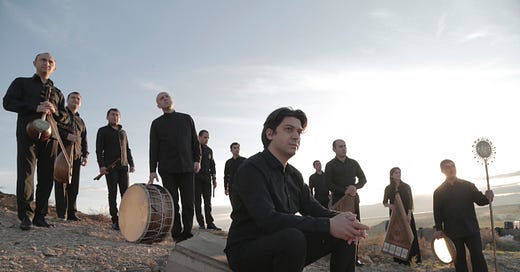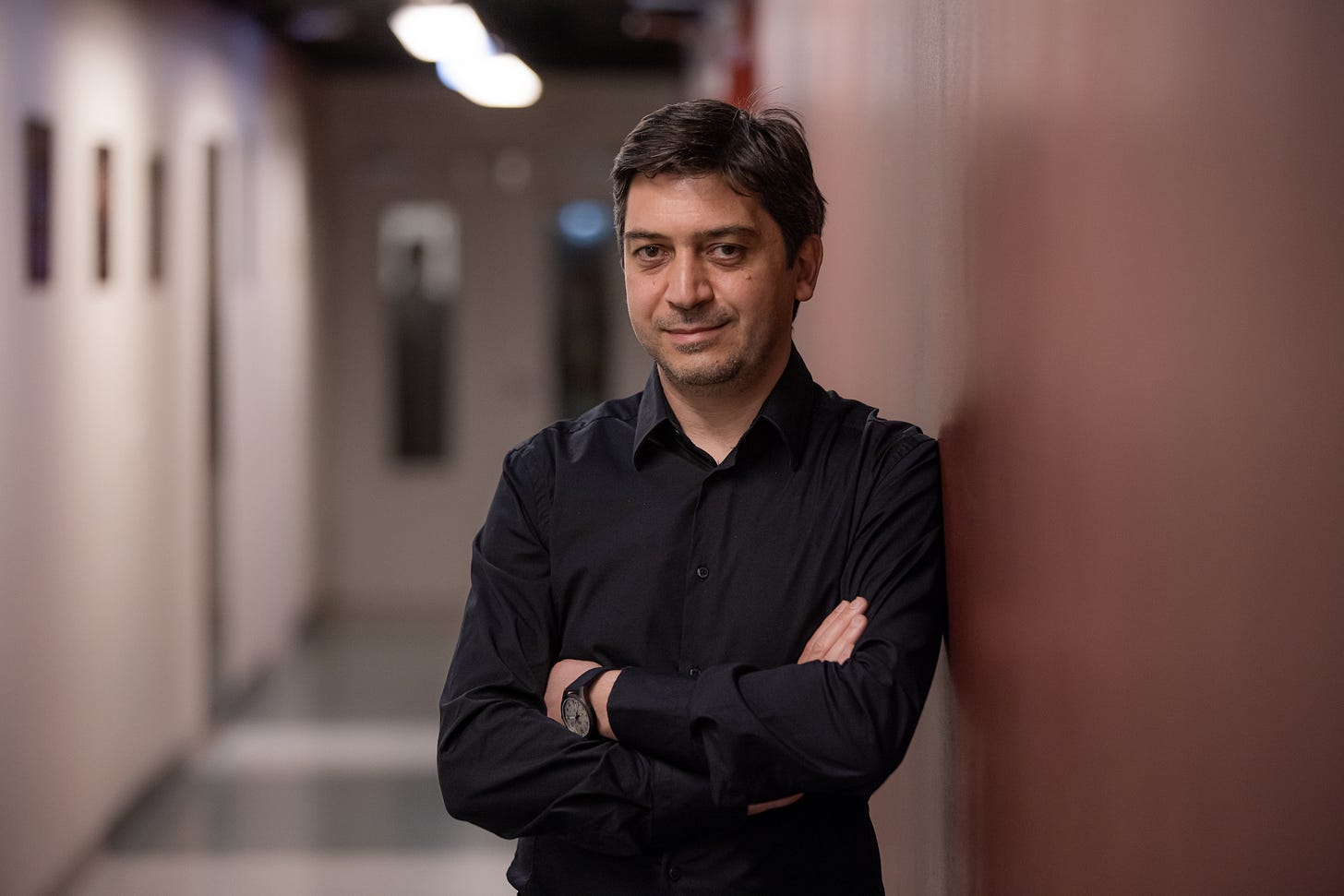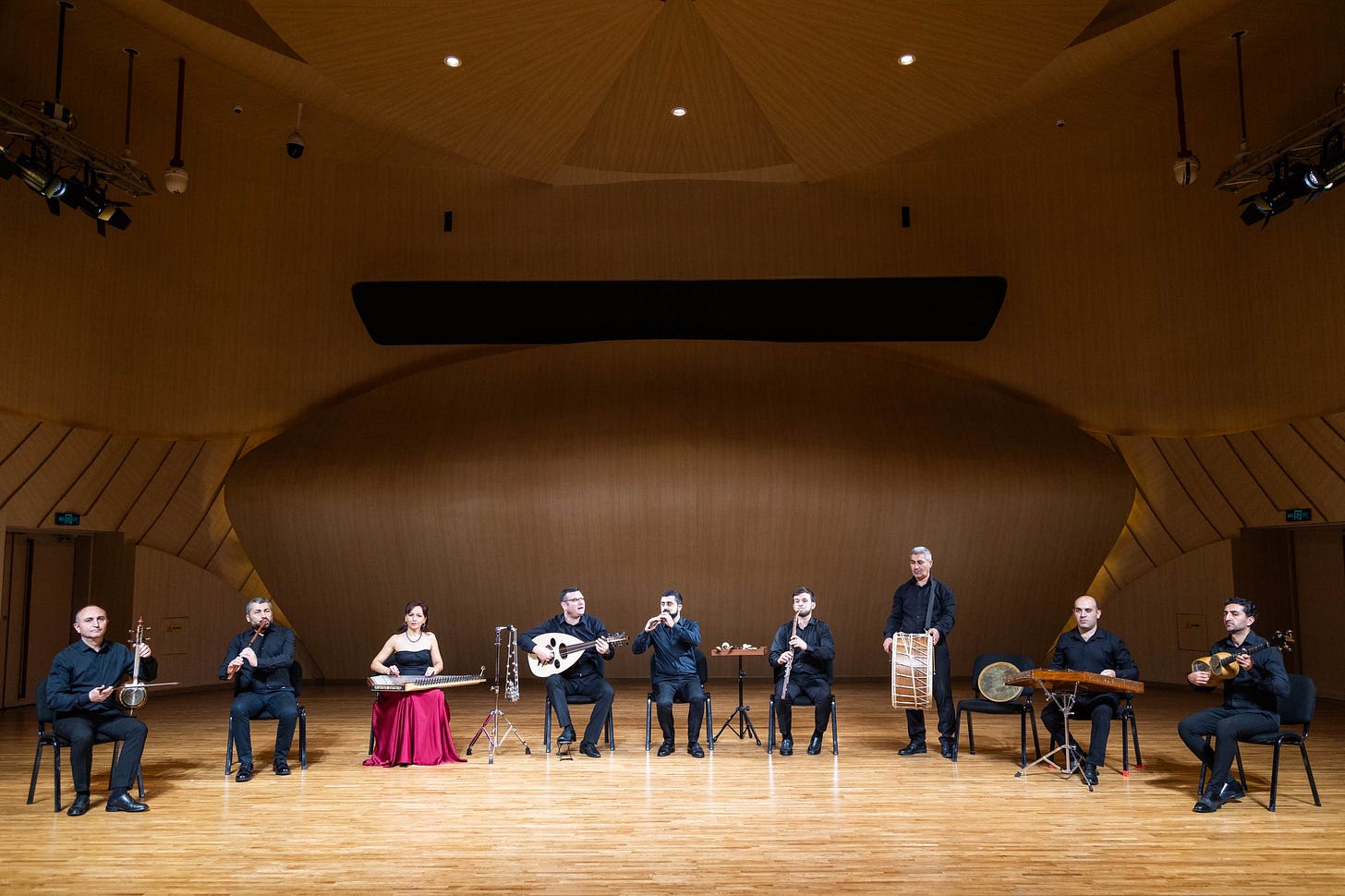A Bridge Between Worlds: Levon Eskenian on Music, Memory, and the Gurdjieff Ensemble
Interview
Welcome to Vintage Cafe.
This is my personal corner for sharing music, books, films, travel, and the stories that stay with me. Every post is written with care, like a letter to a friend. Think of it as a slow conversation over coffee.
This June marks three years of writing, reflecting, and connecting with kindred spirits. To celebrate, I’m offering 20% off to new paid subscribers — a small thank you and an invitation to join the inner circle.
Paid subscribers get access to bonus posts, behind-the-scenes reflections, and deeper dives into the music and moments I don’t share anywhere else. Whether you're reading everything or just stopping by, I’m truly glad you’re here.
It’s not often you come across a musician whose work feels like a bridge—between cultures, centuries, and inner worlds. Levon Eskenian, the Armenian musician and artistic director behind the Gurdjieff Ensemble, is one of those rare figures. Through his thoughtful arrangements and deep cultural understanding, he has led the Ensemble in reimagining the music of G.I. Gurdjieff and Komitas—not as museum pieces, but as living, breathing works that still resonate today. Over the past decade and a half, Eskenian has devoted himself to returning the music of Georges I. Gurdjieff to its natural home: the traditional instruments and modal systems of the East. From the haunting tones of the duduk to the delicate poetry of Komitas, Eskenian’s work is both archaeological and visionary, guided as much by intuition as by scholarship.
Drawing on traditional instruments and a profound respect for the roots of Eastern music, Eskenian has built a sound that reaches back through time, yet speaks clearly to the present. In this conversation, we take a closer look at his journey, both personal and musical, and the passion that fuels his tireless work in preserving and reshaping Armenia’s rich musical heritage.
What initially inspired you to form the Gurdjieff Folk Instruments Ensemble?
It began when I heard an ECM recording by Anja Lechner and Vassilis Tsabropoulos, then Keith Jarrett's recording of Gurdjieff's music, then de Hartmann's—especially the early recordings transcribed by Thomas de Hartmann. I didn’t hear something foreign. I heard echoes of Armenian, Greek, Kurdish, Assyrian, Arabic, and Middle Eastern melodies I’d grown up with in Lebanon, where there was a big Armenian community, where different cultures lived together. I realized that Gurdjieff’s music didn’t need to be interpreted as “Western art music.” These were folk-rooted spiritual transmissions. That’s what inspired me: to return these melodies to their original sonic languages, through traditional instruments and modal traditions, bringing the music back to its natural acoustic environment.
How did you approach the task of adapting Gurdjieff’s music from piano to traditional folk instrumentation?
Carefully and intuitively. Each piece was approached like an archaeological site. I would study the original score from de Hartmann’s transcription, identify its modal structure, rhythm, regional identity, and then find the traditional instrument or combination that could carry its spirit. I never try to decorate the melody—I try to uncover it. Many of these melodies were likely heard by Gurdjieff on his travels in Armenia, the Middle East, and Asia, and I’ve worked to reconstruct the arrangements in a way that resonates with those roots, without turning them into stylized world music.
The ensemble has now released three albums on ECM. How has your artistic vision evolved over the years?
Keep reading with a 7-day free trial
Subscribe to Vintage Cafe to keep reading this post and get 7 days of free access to the full post archives.






